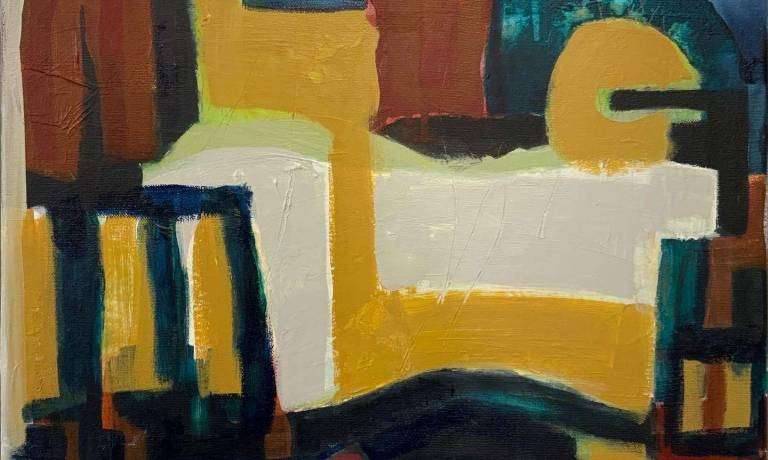Karen Mc Endoo
Karen McEndoo was born in Carshalton in Surrey but her early life was spent in Africa which has had a tremendous influence on her work, inspired particularly by the rich colours, designs and the music. She trained as a graphic designer/illustrator in Taunton but her work has evolved into a more expressive and abstract form of painting. Science and nature are huge influences and she is an avid lover of wildlife
Karen is a member of the South West Academy of Fineand Applied Arts and National Acrylic Painters Association
Working Methods
'Many artists find the idea of a blank canvas daunting and I am no exception. My first task is to break the whiteness by putting down a base colour which, because of the nature of my work, shines through and becomes an intrinsic part, uniting the picture as a whole.
It is rare that I plan the picture, the antithesis of what was drummed into me when learning preferring instead to allow the work to develop its own language. Colour is everything to me and I spend a good deal of time mixing the hues and tones until I have arrived at a coherent palette, something I find a genuine pleasure. The rest is generally, albeit an oxymoron, ordered chaos.
Whilst working it is important for me is to disengage the thinking brain and allow instinct to take over, this can often take a good while to achieve but once you get there it is from where the very best work is born. The act of placing paint onto any surface is rich in possibilities but every bit as fraught with challenges and frustration.
Herein lies the crux of the exciting nature of painting, the never knowing what will arrive before you' KM
'Based in Cornwall, Karen McEndoo’s work is drawn from the dichotomy of chaos and humanity’s constant search for balance, exploring the diametric of light and dark, existence, non-existence, matter and anti-matter.
One mechanism to achieve this balance is science- a measured interpretation of man’s encounter with the world. The process of abstraction works similarly as a visual means of navigating these dichotomies.
Within the abstracted chaos discernable shapes rise and blur before reaching formation. Sweeps of colour appear removed, as if filtered through a lens, fighting against the black which quietly pervades many of McEndoo’s paintings.
Opposites existing in the physical qualities of paint itself are explored; flat planes are challenged by exposed layering, muddied hues bleed around strong primaries, texture built is at once reduced.
Bleary forms abut sharp blocks of colour generating a sense of movement; a dancing shift in focus. At first seemingly restful, McEndoo’s work is imbued with a taut energy'.
Emma Leaper
